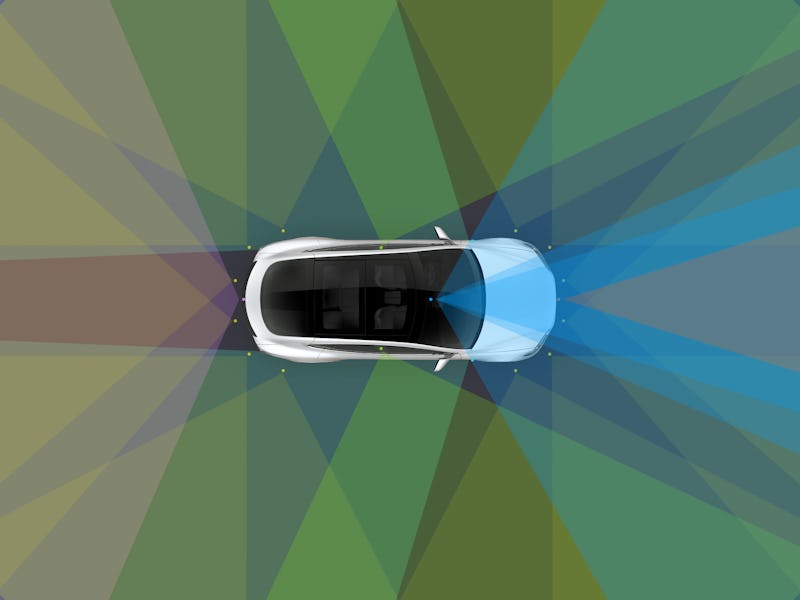What Tesla's New Patent Can Tell Us About Elon Musk's Future Models

Ahead of next week’s much-anticipated earnings call, Tesla has published a new patent that appears designed to make its batteries safer.
The new patent was filed in January and published this week, according to a report yesterday by Teslerati. This new energy storage system, as Teslerati notes, introduces a few systems to make sure that one compromised battery cell doesn’t affect the rest.
Tesla’s new battery would accomplish this by arranging the cells with new interconnects that prevent the gasses released by one cell from affecting others, as well as a new “material for directing a discharge from a failure of one or more battery cells,” according to the company’s patent filing.
This new material has essentially been weakened on purpose. When a lithium-ion battery fails and starts overheating, the electrolyte liquid inside it starts to vaporize — swelling up the battery with highly pressurized gas. These new, more fragile portions of Tesla’s proposed energy storage system would allow a failed battery cell to exhaust that gas without squeezing up against its neighboring cells and overheating them too.
The new energy storage system protects battery cells with a series of interconnects.
The patent says that system may also include features “such as a cold plate or heat pipes, to remove heat generated by the battery cells during operation of the energy storage system” (or during these overheating failures to avoid full-on thermal runaway).
How One Ruptured Battery Affects Those Nearby
Tesla’s got a pretty impressive safety record, thanks in part to the so-called “frunks” that place storage at the front of the car instead of a combustion engine. Last year, for example, the Model X got the highest ever rating from the National Highway Traffic Safety Administration.
“For death or serious injury for S or an X you really have to — it’s hard to do that,” CEO Elon Musk said last year. “The Model S and the X have such a long crumple zone that’s two to three times longer than a conventional automotive car that’s got a big engine steel block in there.”
That said, as Musk has sometimes noted, safety issues with Tesla cars tend to garner disproportionate media coverage relative to its gasoline chugging peers. A recent June report from the National Transportation Safety Board lingered in media coverage for days. Tesla’s patent filing explains how one commpromised battery cell can sometimes start something of a chain reaction.
“The energy storage systems of the present disclosure include “packs” of multiple cells stacked together. These cells and other components in a pack generate heat during operation, both during the charging process to store the energy and during the discharge process when energy is consumed,” the filing reads. “When the cells fail, they typically release hot gases. These gases may impact the integrity of other cells in the pack and may cause substantial damage to the functional cells which have not failed.”
For Tesla to deliver on its plan to accelerate the transition to renewable energy, it needs to make sure that its batteries are getting both safer and more powerful at the same time.